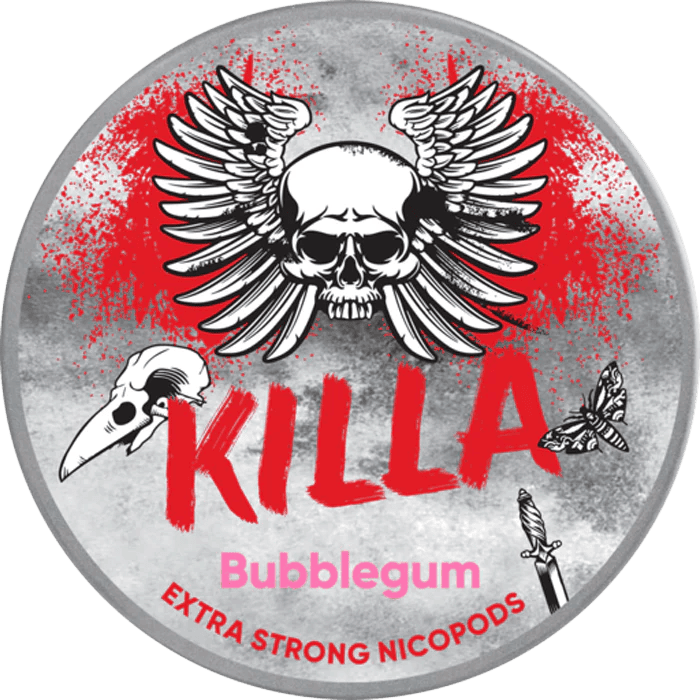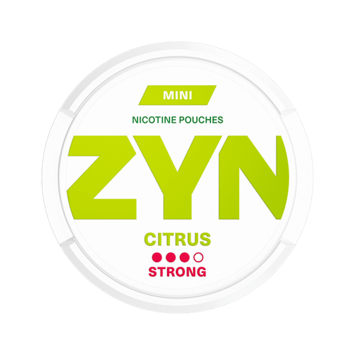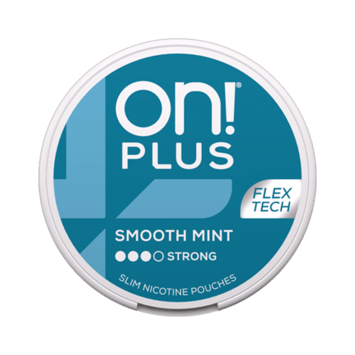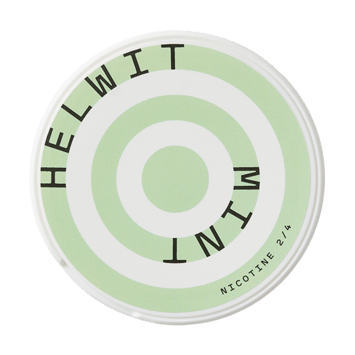How do you quit nicotine pouches?
Philip Plainstein

Have you ever wondered how to stop using nicotine pouches for good? While they may seem like a harmless alternative to smoking, they can still lead to dependence. The decision to quit is a significant step towards improving your health and breaking free from the cycle of addiction. But where do you start?
Research shows that up to 60% of smokers are more likely to quit successfully when using nicotine replacement therapies (NRTs). However, nicotine pouches themselves are not approved for quitting, making it essential to explore other proven methods. Whether you choose to go cold turkey, taper off gradually, or use NRTs, understanding your options is key to success.
Withdrawal symptoms can be challenging, especially during the first week. Symptoms like cravings, irritability, and difficulty concentrating often peak around day three. However, these symptoms typically improve over the first month. The good news is that your body begins to benefit from quitting within 20 minutes, even if you don’t notice it immediately.
This guide will walk you through everything you need to know, from recognising dependence to managing withdrawal symptoms and staying on track. With the right support and strategies, you can overcome the habit and achieve your goal of quitting nicotine pouches for good. Let’s get started on this life-changing journey together.
Understanding Your Nicotine Dependence
Recognising your personal dependence on nicotine is the first crucial step toward quitting. Nicotine addiction often develops gradually, with your body becoming increasingly reliant on regular doses to function normally. If you find it difficult to go without nicotine pouches for extended periods or experience strong cravings, these are clear signs of dependence.
Recognising the Signs of Nicotine Addiction
Common symptoms of nicotine addiction include increased cravings, irritability, and restlessness when attempting to stop. These withdrawal symptoms can be intense during the first week, particularly peaking around day three. Understanding these signs is essential to addressing your dependence effectively.
Impacts on Your Oral and General Health
Nicotine pouches can have significant effects on both oral and general health. While they may seem like a safer alternative to smoking, they can still lead to gum recession, tooth decay, and bad breath. Nicotine itself affects blood flow, increasing heart rate and blood pressure, which can strain your cardiovascular system. Research indicates that long-term use of nicotine products can also heighten the risk of dental issues and overall health concerns.
Reflecting on your personal experience and understanding the health impacts can provide the motivation needed to quit. With the right strategies and support, you can overcome dependence and improve your long-term well-being.
Preparing for Quitting Nicotine Pouches
Embarking on a journey to stop using nicotine pouches requires careful preparation. Understanding your motivations and setting a clear plan can significantly increase your chances of success. This section will guide you through the essential steps to mentally and practically prepare for quitting.
Identifying Your Motivation and Goals
Start by reflecting on why you want to quit. Whether it’s to improve your oral health, reduce your dependency, or live a healthier lifestyle, identifying your reasons is crucial. Writing down your motivations can help reinforce your commitment. For example, consider how quitting can benefit your long-term well-being and set specific, achievable goals for your journey.
“The mind is the root of all action; set your mind to quit, and your body will follow.”
Setting a Realistic Quit Date
Choose a quit date during a stress-free period to avoid unnecessary challenges. Gradually reducing your nicotine intake before this date can help minimise withdrawal symptoms. Consider using nicotine replacement therapies (NRTs) or the tapering method, as suggested by experts at Nic Pouch UK. Planning ahead for potential withdrawal symptoms and breaking habitual patterns will strengthen your resolve.
Effective Strategies for Quitting Nicotine Pouches
Deciding to quit nicotine pouches is a brave step toward a healthier lifestyle. To succeed, it’s important to choose a strategy that suits your needs and habits. Whether you prefer a gradual approach or an abrupt stop, having the right tools and mindset can make all the difference.
Comparing Approaches: Gradual Tapering vs Cold Turkey
Gradual tapering involves slowly reducing your nicotine intake over time. This method can help minimise withdrawal symptoms, making the process more manageable. For example, you might start by using fewer pouches each day or switching to lower nicotine levels. While this approach takes longer, it can lead to fewer intense cravings.
On the other hand, quitting cold turkey means stopping abruptly without any gradual reduction. This method is faster but can be more challenging due to stronger withdrawal symptoms. Studies suggest that only a small percentage of people successfully quit this way, but it can be effective for those with strong willpower.
Integrating Nicotine Replacement Therapy (NRT)
Nicotine Replacement Therapy offers a medically approved way to manage cravings. Products like patches, gum, or lozenges provide controlled nicotine doses, helping you avoid withdrawal symptoms. NRT also substitutes the hand-to-mouth ritual, which many find comforting. However, it’s important to use these products as directed to avoid side effects.
Combining these strategies with proper support can significantly increase your chances of success. Whether you choose gradual tapering, cold turkey, or NRT, the key is to stay committed and surround yourself with people who encourage your journey.
Managing Withdrawal Symptoms and Triggers
When you stop using nicotine pouches, your body may react with withdrawal symptoms. These can be challenging, but understanding them is key to staying on track. This section will guide you through the common symptoms and practical strategies to manage them effectively.
Understanding Common Withdrawal Symptoms
Withdrawal symptoms typically begin within 24 hours of stopping nicotine. They often peak around day three and gradually subside over the next few weeks. Common symptoms include cravings, irritability, and anxiety.
| Day | Symptoms | Duration | Management Tips |
|---|---|---|---|
| 1-3 | Cravings, irritability, anxiety | Peak intensity | Stay active, practice mindfulness |
| 4-7 | Restlessness, difficulty concentrating | Gradual decline | Engage in hobbies, seek support |
| 8-14 | Mood swings, sleep disturbances | Subsiding | Maintain a routine, healthy diet |
Techniques to Control Cravings and Avoid Triggers
To manage cravings, try distraction techniques like deep breathing or short walks. Avoid triggers such as stress or certain social situations. Staying active and engaged can help overcome difficult phases.
Understanding these symptoms is crucial for your quit journey. With the right strategies and support, you can overcome withdrawal and achieve your goal of a healthier lifestyle.
Building Your Support Network and Healthy Habits
Constructing a robust support system is crucial for overcoming nicotine pouch dependence. Surrounding yourself with encouraging individuals and adopting healthier lifestyle choices can significantly enhance your journey towards a nicotine-free life.
Using Behavioural Therapy and Practical Support
Behavioural therapy offers structured techniques to manage cravings and triggers. Professional guidance can help you stay committed to your goals. Additionally, joining support groups provides a sense of community and accountability, which are vital for long-term success. For more strategies, visit this guide on quitting smoking, which offers valuable insights applicable to nicotine pouches.
Incorporating Lifestyle Changes for Long-term Success
Adopting a healthier lifestyle can bolster your resolve. Regular exercise and a balanced diet not only improve overall health but also reduce cravings. Creating a pouch-free environment at home and avoiding triggers are essential steps. For tailored advice, refer to this resource on quitting nicotine pouches.
Celebrating small victories, like reaching a week without nicotine pouches, can motivate you to continue. Surround yourself with supportive people and engage in activities that distract you from cravings. With the right support and mindset, you can achieve your goal of quitting nicotine pouches for good.
Embracing a Nicotine-Free Future
Embracing a life without nicotine is a transformative journey that opens the door to improved health and well-being. By leaving nicotine pouches behind, you not only reduce your risk of oral health issues but also contribute to a healthier cardiovascular system. Each day without nicotine is a step toward a stronger, cleaner lifestyle.
The strategies and support systems discussed earlier—such as NRT, gradual tapering, and behavioural therapy—are essential for maintaining your success. Remember, withdrawal symptoms are temporary, and with time, your body will adapt. Celebrate small milestones, like reaching a week without nicotine, to stay motivated.
Set new personal goals and seek support when needed. Every step you take toward quitting is a victory. Stay committed, and you’ll find that life without nicotine is not just possible but incredibly rewarding. Your journey is a testament to your strength and determination.









